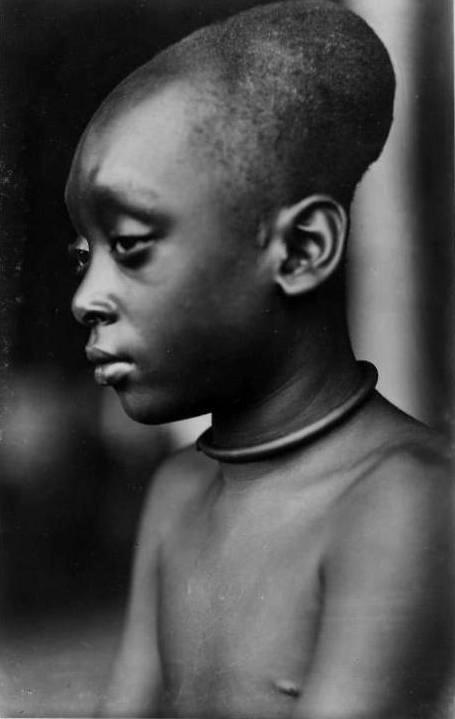
African Tribes: The Mangbetu

Figure 1.-- The Mangbetu are not a tribe in the normal sence as an ethnic group. The Mangbetu were a ruling aristocracy which dominated the area. Most of those ruled were not of Mangbetu ancestry. They are most notable for highly developed art and music as well as their characteristic scull elongation. This is called 'lipombo' and was a status symbol among the Mangbetu ruling classes.
|
|
The Mangbetu are found in the northern Congo (Zaire) and Democrativ Republic ofthe Congo, along the border with the Central African Republic and Sudan. They speak Mangbetuti related to central Sudanic languages. Before the development of DNA techniques, linguistics was a principal tool of scholars studying pre-literate groups like African tribes and Native Anerican tribes. Thus it is believed that the Mangbetu began migrated from the central and southern Sudan south (Mid-18th century). During this migration they apparently encounteted Bantu peoples migrating north. They are believed to have reched the northern Congo (early-19th century). The area was inhabited by the Mbuti--pygmy people. They also absorbef migratory waves of eastern peoples. The modern Mangbetu are a mixed group produced from cultural interactions and inter-marriage with the Bantu and pygmy people they encountered as a result of their migration. Nabiembale briefly established a kingdom of some importance regionally. It was overcome by Islamic Sudanic slavers estanlished a level of control over the area. This is also known as the Swahili raids. This was during the Mhadist revolt in the Sudan. The slavers set up Islamic sultanates. They controlled the area until expelled by the Belgians. The Mangbetu are not a tribe in the normal sence as an ethnic group. The Mangbetu were a ruling aristocracy which dominated the area. Most of those ruled were not of Mangbetu ancestry. They are most notable for highly developed art and music as well as their characteristic scull elongation. This is called 'lipombo' and was a status symbol among the Mangbetu ruling classes.
HBC

Navigate the Boys' Historical Clothing Web Site:
[Introduction]
[Activities]
[Biographies]
[Chronology]
[Cloth and textiles]
[Clothing styles]
[Countries]
[Topics]
[Bibliographies]
[Contributions]
[FAQs]
[Glossaries]
[Images]
[Links]
[Registration]
[Tools]
[Boys' Clothing Home]
Navigate the Boys' Historical Clothing national pages:
[Return to the Main African tribal page]
[Algeria]
[Australia]
[Belgium]
[England]
[France]
[Germany]
[Ireland]
[Italy]
[Japan]
[Korea]
[Madagascar]
[Mali]
[Mexico]
[New Zealand]
[Scotland]
[Uganda]
[United States]
Created: 3:33 AM 10/5/2010
Last updated: 3:33 AM 10/5/2010



